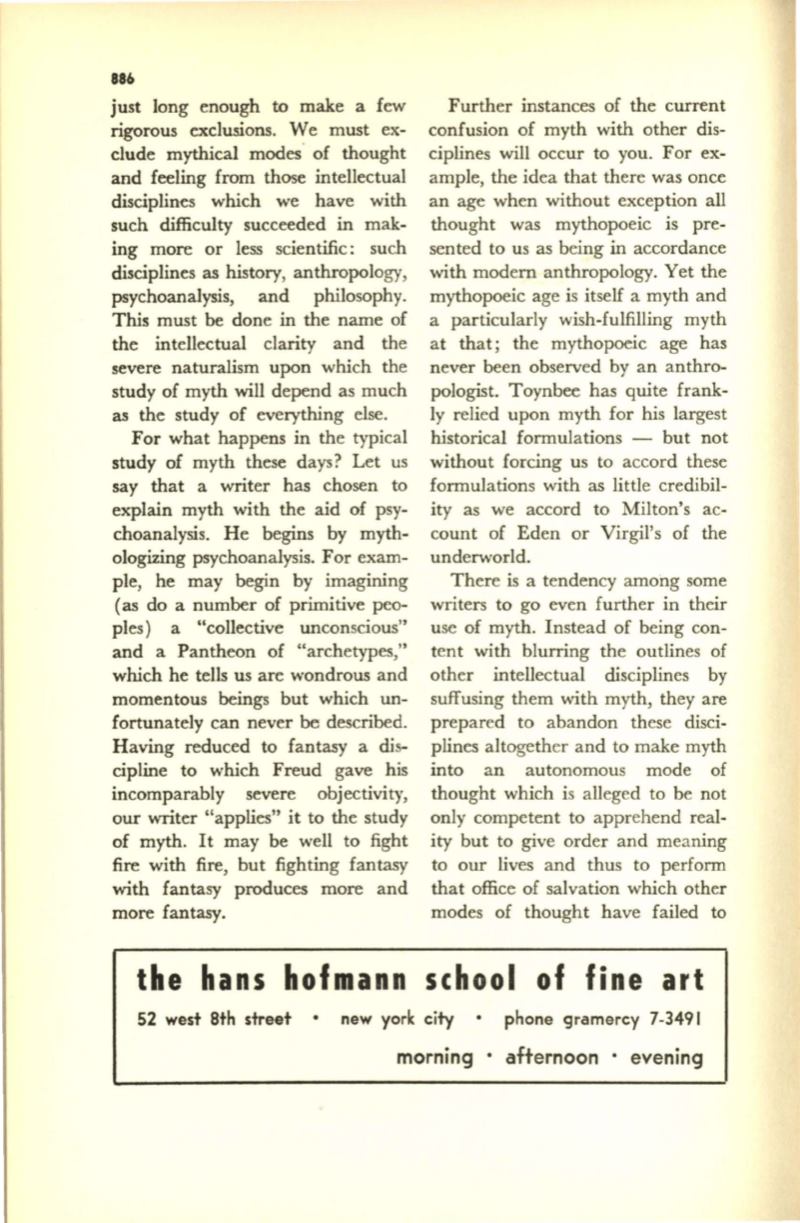
886
just long enough to make a few
rigorous exclusions. We must ex–
clude mythical modes' of thought
and feeling from those intellectual
disciplines which we have with
such difficulty succeeded in mak–
ing more or less scientific: such
disciplines as history, anthropology,
psychoanalysis, and philosophy.
This must be done in the name of
the intellectual clarity and the
severe naturalism upon which the
study of myth will depend as much
as the study of everything else.
For what happens in the typical
study of myth these days? Let us
say that a writer has chosen to
explain myth with the aid of psy–
choanalysis. He begins by myth–
ologizing psychoanalysis. For exam–
ple, he may begin by imagining
(as do a number of primitive peo–
pIes) a "collective unconscious"
and a Pantheon of "archetypes,"
which he tells us are wondrous and
momentous beings but which un–
fortunately can never bo described.
Having reduced to fantasy a dis–
cipline to which Freud gave his
incomparably severe objectivity,
our writer "applies" it to the study
of myth. It may be well to fight
fire with fire, but fighting fantasy
with fantasy produces more and
more fantasy.
Further instances of the current
confusion of myth with other dis–
ciplines will occur to you. For ex–
ample, the idea that there was once
an age when without exception all
thought was mythopoeic is pre–
sented to us as being in accordance
with modern anthropology. Yet the
mythopoeic age is itself a myth and
a particularly wish-fulfilling myth
at that; the mythopoeic age has
never been observed by an anthro–
pologist. Toynbee has quite frank–
ly relied upon myth for his largest
historical formulations - but not
without forcing us to accord these
formulations with as little credibil–
ity as we accord to Milton's ac–
count of Eden or Virgil's of the
underworld.
There is a tendency among some
writers to go even further in their
use of myth. Instead of being con–
tent with blurring the outlines of
other intellectual disciplines by
suffusing them with myth, they are
prepared to abandon these disci–
plines altogether and to make myth
into an autonomous mode of
thought which is alleged to be not
only competent to apprehend real–
ity but to give order and meaning
to our lives and thus to perform
that office of salvation which other
modes of thought have failed to
the hans hofmann school of fine art
52
west 8th street
new york
city
phone gramercy 7-3491
morning • afternoon • evening


